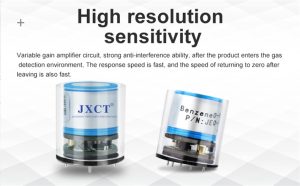Guarding public health and ensuring clean air quality has become an essential global mission. Air pollution is a significant environmental challenge that can have severe consequences on human health, ranging from respiratory illnesses to cardiovascular diseases. To tackle this issue effectively, it is crucial to monitor air quality accurately. Gas sensors have emerged as powerful tools in this endeavor, enabling real-time monitoring and analysis of gas concentrations in the atmosphere. This article aims to explore the applications of gas sensors in public health and their role as guardians of clean air.

Understanding Gas Sensors:
Gas sensors are electronic devices designed to detect and measure the concentration of various gases present in the air. They employ different sensing techniques such as electrochemical, semiconductor, and optical methods to capture gas molecules and convert their presence into measurable electrical signals. Gas sensors are sensitive, selective, and can provide real-time data on the composition of the air we breathe.
Applications of Gas Sensors in Public Health:
- Monitoring Ambient Air Quality: One of the primary applications of gas sensors in public health is the monitoring of ambient air quality. Gas sensors can detect and measure various pollutants such as nitrogen dioxide (NO2), sulfur dioxide (SO2), ozone (O3), carbon monoxide (CO), and particulate matter (PM). By continuously monitoring these gases, gas sensors help assess air quality levels, identify pollution hotspots, and evaluate the effectiveness of pollution control measures.
- Personal Exposure Monitoring: Gas sensors play a crucial role in assessing individual exposure to air pollutants. Portable and wearable gas sensor devices enable real-time tracking of personal exposure to harmful gases. This information is invaluable for individuals, especially those with respiratory conditions or vulnerable populations, as they can make informed decisions to reduce exposure to polluted environments.
- Indoor Air Quality Monitoring: Indoor air quality is a significant concern, as people spend a significant amount of time indoors. Gas sensors can detect pollutants such as volatile organic compounds (VOCs), carbon dioxide (CO2), and formaldehyde (HCHO) emitted from various sources like cleaning agents, building materials, and cooking appliances. By monitoring indoor air quality, gas sensors help identify potential health risks and enable the implementation of mitigation strategies to ensure healthier environments.
- Early Warning Systems: Gas sensors are integral components of early warning systems for air pollution events. By detecting pollutant levels in real-time, gas sensors provide timely alerts to authorities and the public, allowing for swift response measures. This is particularly important in situations such as industrial accidents or forest fires, where immediate action is necessary to protect public health.
Advancements in Gas Sensor Technology:
Significant advancements have been made in gas sensor technology, enhancing their accuracy, sensitivity, and reliability. Some notable advancements include:
- Miniaturization: Gas sensors have become smaller in size, leading to the development of portable and wearable monitoring devices. This enables personal exposure monitoring and real-time tracking of air quality, empowering individuals to take proactive measures to safeguard their health.
- Internet of Things (IoT) Integration: Gas sensors can now be integrated into IoT platforms, creating networks of interconnected devices. This integration enables remote monitoring, data sharing, and real-time analysis, facilitating efficient environmental management. Additionally, IoT integration allows for the development of smart cities and real-time air quality mapping.
- Selectivity and Sensitivity Improvements: Advancements in sensor materials and manufacturing processes have led to improved selectivity and sensitivity of gas sensors. This enables better discrimination between different gases and detection at lower concentrations, enhancing the accuracy and reliability of air quality measurements.
Challenges and Future Outlook:
While gas sensors have shown tremendous potential in public health applications, certain challenges need to be addressed. Calibration issues, sensor drift, cross-sensitivity to interfering gases, and the need to expand the spatial coverage of monitoring networks are among the challenges faced by gas sensor technology.
Looking ahead, the future of gas sensors in public health looks promising. Further advancements in nanotechnology, machine learning, and big data analytics are expected to enhance sensor performance, enabling more comprehensive and precise monitoring. The integration of gas sensors with emerging technologies like drones and satellites could provide valuable insights into air quality dynamics on a larger scale.

Conclusion:
Gas sensors have emerged as indispensable tools in safeguarding public health and ensuring clean air quality. Their ability to provide real-time, accurate data on gas concentrations has revolutionized our understanding of air pollution and its impact on human health. With continuous advancements in gas sensor technology, we can expect a future where informed decision-making, proactive pollution control measures, and healthier environments become the norm. Gas sensors truly serve as the guardians of clean air, protecting our well-being and contributing to a sustainable future.
 : +86 155 8830 2704
: +86 155 8830 2704 : jxdziot@gmail.com
: jxdziot@gmail.com
